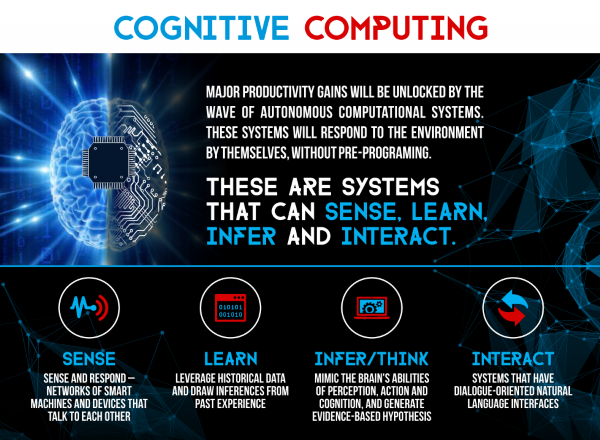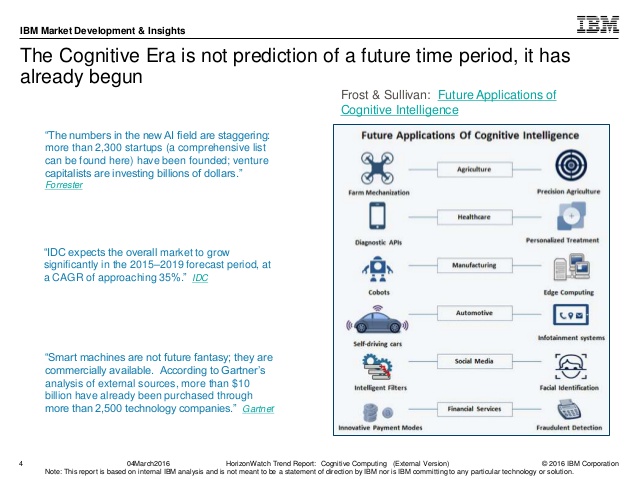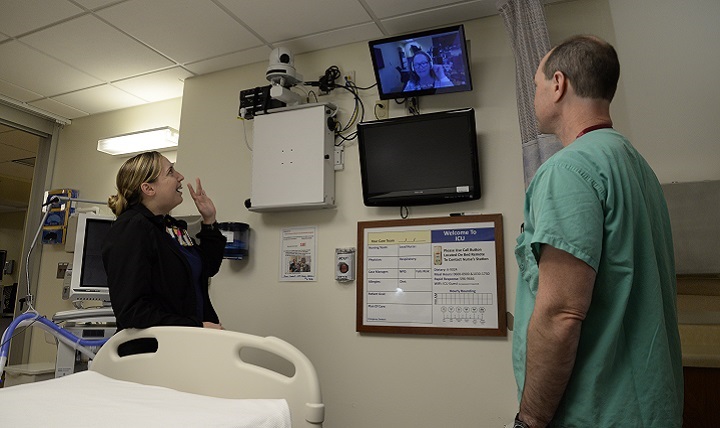Cognitive computing is computing built upon self-learning systems that uses pattern recognition, data mining, and natural-language processing to mimic the way in which the human brain operates. Cognitive computing-based systems employ machine-learning algorithms and they acquire knowledge from the data continually fed into them.

The systems mine the input data for information, looking for patterns and continually keep adapting the way in which they look for patterns and process the data. Cognitive computing is used in numerous AI-based applications including neural networks, virtual reality, robotics, natural-language programming, and expert systems.
How can you get increased business value with cognitive computing? Here is a primer.
How do you utilize cognitive computing?
The number of data sources in this age of cloud- and Internet-driven computing is incredibly large. The volume of data from various sources — email, documents, instant messages, social media, video, audio, and images is growing at an exponential rate.
All the chatter on Big Data business analytics has brought a welcome focus on the kinds of insights lying hidden and untapped in this pile of data. While data warehouses, tables, software programs, and analytics tools make a decent effort to pull out insight from all this data, we are only scratching the surface at any given moment.
In a data-driven economy like this, which is only going to become more data driven, cognitive computing, along with advanced business analytics, can help to bring to the surface a tremendous amount of valuable insights that can be used to grow revenue and improve the competitive edge. So how can you utilize cognitive computing? Here are some ways:.
In the hands of on-ground personnel
The automotive-financing scenario presents an excellent case. The financial plan that is presented to the customer is completely unique and depends on the income sources for and savings held by the customer.
This process is normally time consuming and is often a source of frustration to the customer as offers and counter offers are made back and forth until the final deal is reached. This process can be greatly aided with the use of cognitive computing, or you can just use your steel grip like Frank Catton and strong-arm the other person to get your price! That worked in Ocean’s 11 for those vans!
Provided the customer’s consent has been obtained first, agents can use cognitive systems to do a very rapid, 360-degree search and analysis of all the customer’s data sources ranging from their financial transactions to their driving history. As long as your driving history does not read like Dominic Torreto’s in The Fast and the Furious movies, you should be good to go! But if it even comes close to his in terms of fines, you may have some issues.

With the kind of advanced profiling that cognitive systems can do, data related to spending patterns, earnings, and spending history can be very rapidly crunched into income-related eligibility for the loan financing. The result: An almost instant loan offer at terms that are very attractive and suitable for the customer. No need for multiple counter offers. The customer does matter a little bit, right United Airlines?
Proactive detection of product safety issues ahead of recalls
If there is one event that is extremely damaging in terms of product image and customer satisfaction with enormous ripple effects on revenue and sales, that would be a product recall. By building in advanced cognitive micro-modules into large-scale systems such as automobiles, manufacturers can ensure that millions of data points are being crunched every year from actual usage relating to crashes, rapid turns, blowouts, and other issues.
As cognitive systems make out insights from usage patterns and relay them to dedicated service centers, it is highly probable that vehicles can be brought in for a proactive software update, component change, or service instead of a forced recall, which is costly on multiple accounts.
High insights performance
Cognitive computing relies on technologies such as machine learning, natural language processing, and real-time computing to be able to absorb real-time data in as human-like a manner as possible. These technologies allow you to sift through terabytes of fast accumulating data to come up with insights that could not have been discovered by any human working with any number of tools.
Given the fact that cognitive systems are smart enough to be adaptive learners, the fundamental logic on which they are built enables them to deliver on a lifetime of continuous insights, one after the other.
Improvements in medical care for critically ill patients

One of the areas in which cognitive computing can help make a quantum leap in the quality of care is with regards to the medical care for critically ill patients. Once you have a cognitive system that is set up with various scopes and sensors on an ill patient, what you have is the ability to process basically thousands of data points every hour, being a continuous monitoring system.
With this kind of a system, you may even be able to set up a system that automatically delivers a certain drug via the connected IV line if the patient’s specific indicator moves outside a safe range. This is particularly suited for setups where the number of health-care personnel at a facility is clearly less and a lot of remote monitoring needs to be done.
Improvements in weather forecasting

Another area where cognitive computing can make a dramatic difference is with regards to the entire area of weather forecasting. With cognitive computing, you can have a system setup with sensors at literally thousands of places feeding data on a real-time basis with regards to parameters such as wind speed, rainfall, temperature, and relative humidity.
Now, think about it, it is true that we already have similar systems and supercomputers doing weather modelling and the like. But with a cognitive system, because of the natural language processing abilities, you also have the ability to tap human forecasters (experts) on the ground and be able to process their human inputs along with the sensed data.
With a remote robotic setup, you may even be able to set up a system where once a rain gauge becomes full, the event is sensed and the gauge is emptied with the system temporarily switched off line and put back into place.
Photo credit: Flickr / Gerd Leonhard



